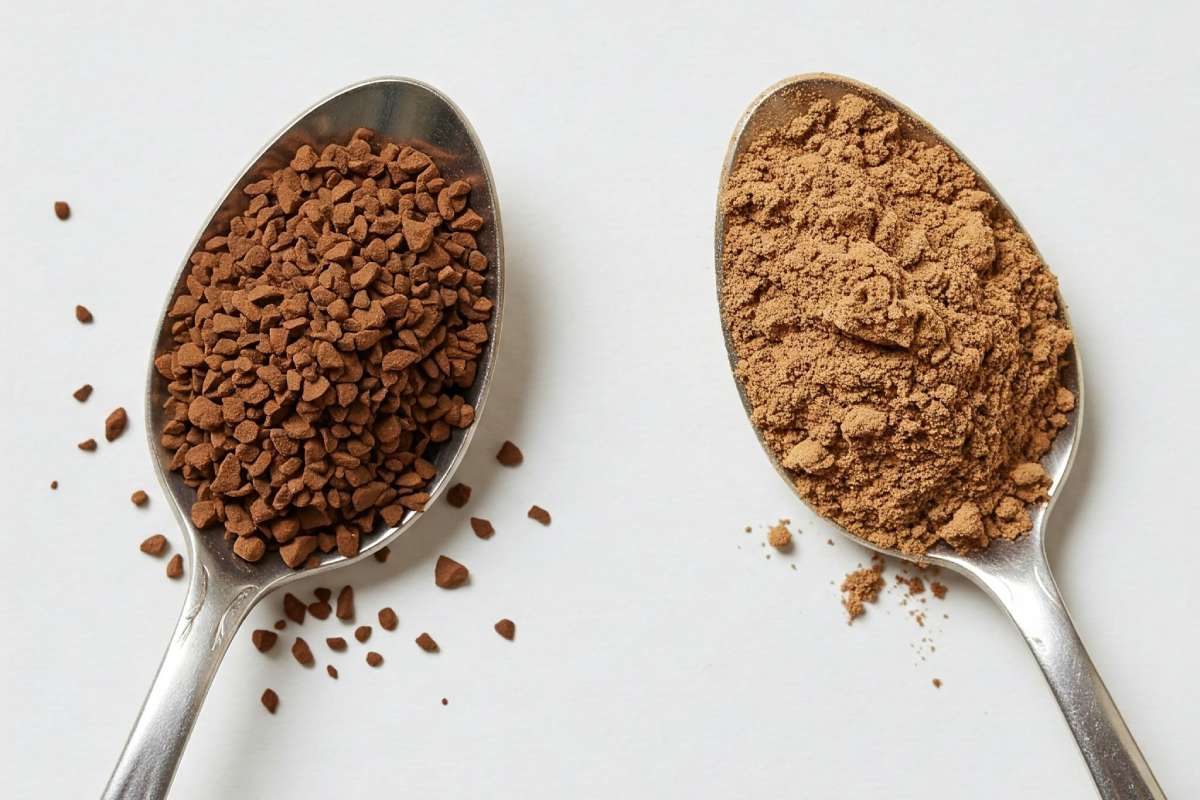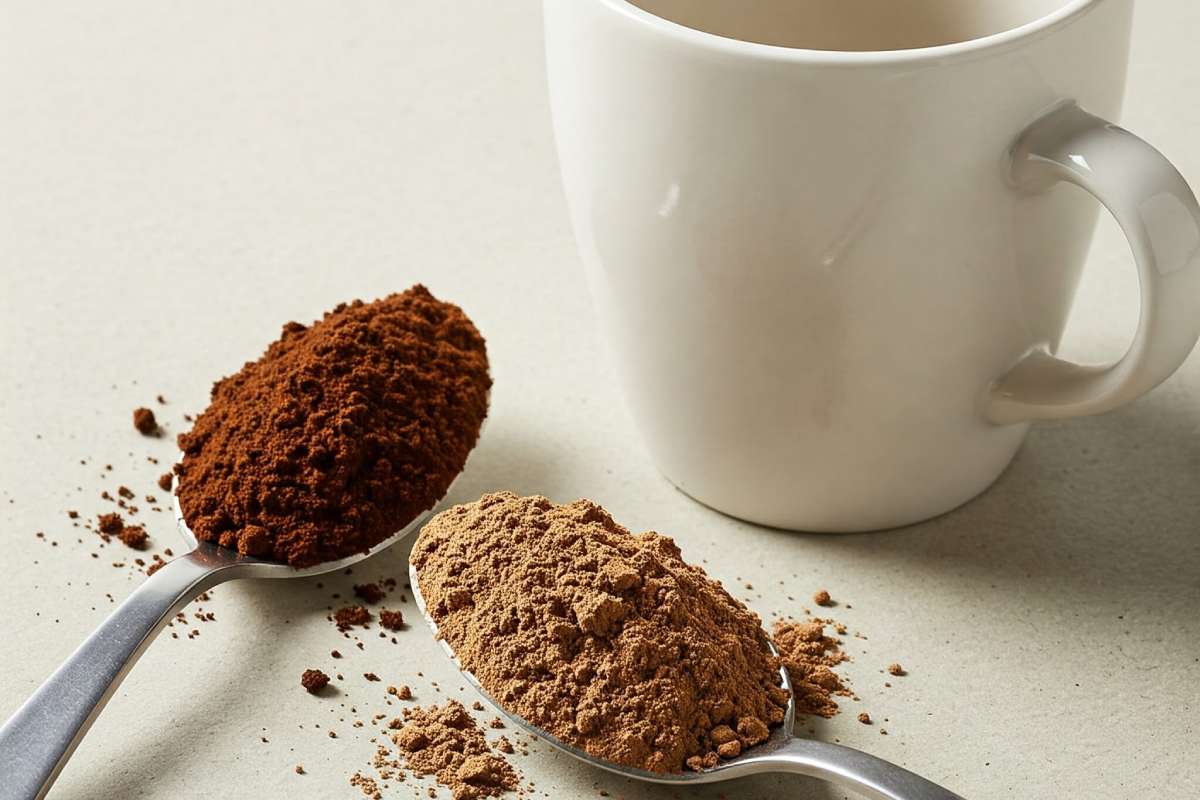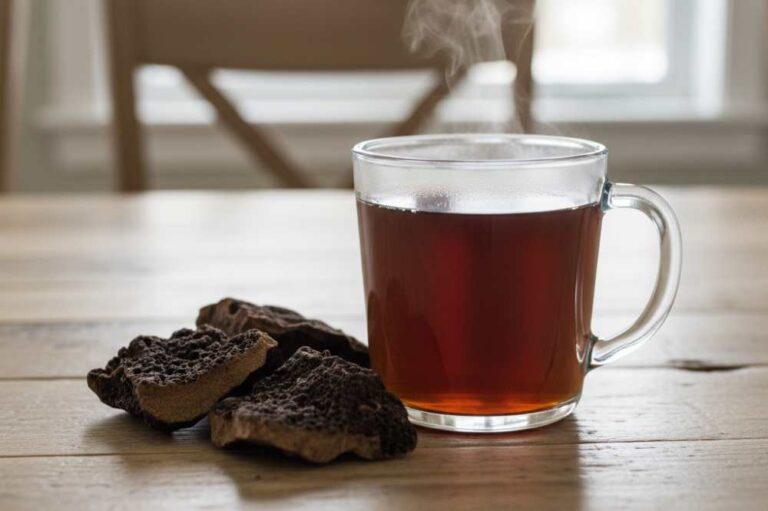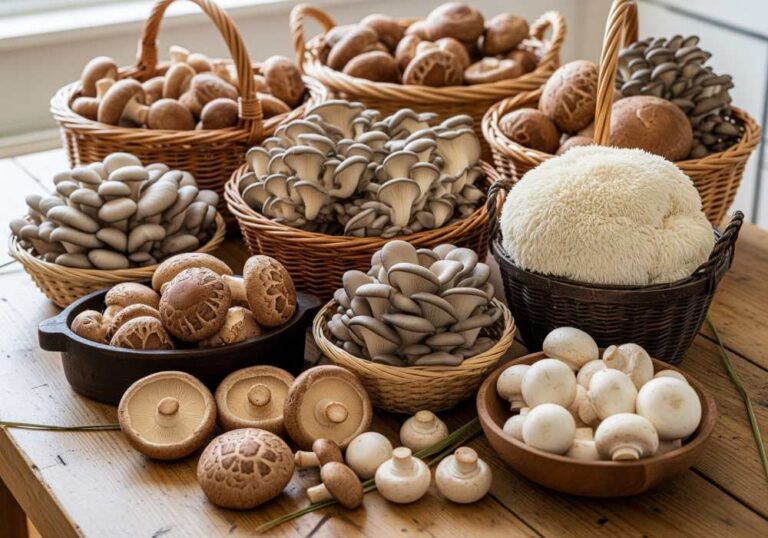The familiar aroma of freshly brewed coffee is a ritual, a comfort, and a daily necessity for millions. The caffeine kick is undeniable. We love it for its efficiency, warmth, and, let’s be honest, deliciousness.
But, as much as we adore our regular coffee, it’s not without its drawbacks. The jitters, the anxiety, and the inevitable crash are the trade-offs we often accept for that initial burst of energy.
But instead of just a jolt of caffeine, you’re sipping mushroom coffee that promises to sharpen your focus and calm your nerves.
Why do we accept the limitations of regular coffee when there’s a better option? Why not combine the energy boost we crave with the cognitive support we need? This isn’t a “maybe” situation. It’s a logical progression.
Let’s find out and optimize your coffee experience, period.
Why Would You Mix Them? (The Logic Behind the Blend)
Coffee lovers are always looking for ways to enhance their daily cups, whether for better taste, smoother energy, or health benefits.
But when you combine the bold, familiar kick of regular coffee with the earthy, adaptogenic touch of mushroom coffee, it turns out to be compelling and worth trying.

Flavor Tweaks
Not everyone enjoys the deep bitterness of black coffee, and not everyone loves the earthy undertones of mushroom coffee. By blending them, you get a balanced cup that keeps the classic coffee flavor intact while introducing subtle umami notes. If regular coffee feels too strong or acidic, adding mushroom coffee can soften its edge.
Health Benefits Combo
Mushroom coffee is often marketed for its cognitive and immune-boosting properties. Research suggests that certain mushrooms, such as Hericium erinaceus (lion’s mane), can support brain function and neuroprotection. Meanwhile, coffee itself is known for its antioxidants and metabolism-boosting effects. You get a potential fusion of both benefits in a single cup when mixed.
Caffeine Adjustment
Too much caffeine can lead to jitters, crashes, or even sleep disturbances. Since many mushroom coffee blends contain less caffeine than regular coffee, mixing them can help tone down the intensity while still providing a morning energy boost. If you’re looking for a smoother, more sustained focus without an afternoon slump, this blend could work in your favor.

Lower Acidity Potential
Regular coffee can be harsh on sensitive stomachs due to its acidity. Some research highlights that mushroom coffee, particularly blends including Ganoderma lucidum (reishi), has gentler effects on digestion. If acid reflux or stomach sensitivity is a concern, blending mushroom coffee with regular coffee may help create a milder, more gut-friendly drink.
So, Yes, it is generally safe to mix mushroom coffee with regular coffee, as both are made from natural ingredients.
How to Mix Mushroom Coffee with Regular Coffee for the Best Taste & Benefits
Getting the balance right is key if you want to mix mushroom coffee with regular coffee. Too much mushroom coffee might weaken the boldness of your brew, while too little won’t allow you to experience its full benefits. Here’s how to mix them effectively for taste, health, and energy balance.

Step 1: Choosing the Right Ratio
The perfect ratio depends on what you’re looking for in your cup. Here are a few tested mixing methods:
Balanced Blend (1:1) → Best for beginners
- Equal parts mushroom coffee and regular coffee.
- Keeps the taste familiar while introducing earthy, adaptogenic properties.
- Great for a smoother caffeine boost with fewer jitters.
Strong Coffee Flavor (2:1) → Best for traditional coffee lovers
- Two parts regular coffee, one part mushroom coffee.
- Retains a bold coffee taste while slightly lowering acidity and adding health benefits.
- Good for those who want caffeine but are open to added wellness perks.
Mushroom-Dominant Blend (1:2) → Best for wellness seekers
- One part regular coffee, two parts mushroom coffee.
- Reduces caffeine intake while boosting adaptogenic and immune-supportive effects.
- Ideal for people sensitive to caffeine or looking for sustained energy without crashes.
Pro Tip: At first, start with a 1:1 ratio. Then adjust based on your taste and energy levels.

Step 2: Best Brewing Methods for a Smooth Blend
Your brewing method can influence the final taste and effectiveness of your mix.
Here’s how different techniques affect the outcome:
Pre-Mixing Grounds Before Brewing (Best for drip machines, French press, pour-over)
- Blend your coffee and mushroom coffee grounds before brewing for an even extraction.
- Works well for whole-bean grinding if you prefer fresh, custom blends.
- Offers the most natural, well-rounded taste.
Stirring Instant Mushroom Coffee into Brewed Coffee (Best for quick preparation)
- If your mushroom coffee comes in instant form, simply stir it into a freshly brewed cup of regular coffee.
- This method is ideal for busy mornings, travel, or office use.
- Downsides: Less control over extraction and texture compared to brewing fresh grounds.

Espresso-Based Drinks (Lattes & Cappuccinos)
- Add a shot of espresso to mushroom coffee for a richer, bolder cup.
- Pairs well with steamed oat or almond milk to balance flavors.
- Works best if your mushroom coffee has mild flavors (e.g., Lion’s Mane).
Pro Tip: If using a drip coffee maker, aim for a medium-coarse grind to prevent over-extraction.
Step 3: Enhancing the Taste (For Those Who’s Not Familiar with Earthy Notes)
Mushroom coffee has an earthy, slightly nutty taste, which some people love, while others find too different from traditional coffee. Here’s how to make the mix more enjoyable without losing its benefits:
Sweeteners
- Cinnamon – Adds warmth and complements both coffee and mushroom flavors.
- Raw honey – Provides natural sweetness and pairs well with earthy notes.
- Maple syrup – Offers a rich, caramel-like touch.
Creamers & Milk Options
- Oat milk – Slightly sweet and creamy, balances earthy tones.
- Macadamia milk – Adds a buttery, nutty flavor that pairs well with mushrooms.
- Coconut milk – Enhances smoothness while keeping it dairy-free.

Flavor Enhancers
- Vanilla extract – Softens bitterness and blends flavors naturally.
- Dark chocolate shavings – Adds a mocha-like richness.
- Cardamom or nutmeg – Works well for a spiced coffee twist.
Pro Tip: Mix your coffee with a small piece of dark chocolate before brewing to create a smooth, mocha-like cup.
The best way to find your ideal mushroom coffee blend is through experimentation. Start with a 1:1 ratio, choose a brewing method that suits your lifestyle, and adjust flavors to match your preference.
What Happens When You Mix Them? (The Pros & Cons)
Blending mushroom coffee with regular coffee isn’t just about taste—it also affects how your body reacts to caffeine, how your brain functions, and even how your stomach handles it. Some people swear by the mix, while others might not find it beneficial.
Let’s break down the advantages and potential drawbacks of this coffee combination.
Potential Benefits
Sustained Energy Boost
Regular coffee delivers a quick jolt of energy, but it can also lead to crashes. Mushroom coffee, especially when made with Lion’s Mane (Hericium erinaceus), helps provide more balanced mental clarity and focus. You get the best of both worlds—an initial energy kick from caffeine and a sustained focus from mushroom compounds.

Reduced Jitters & Anxiety
Too much caffeine can cause nervousness, restlessness, or a racing heart. Reishi (Ganoderma lucidum), a common mushroom found in mushroom coffee. It has potential calming effects. Mixing it with regular coffee might help counteract some of the overstimulation, leading to a more relaxed but alert state.
More Nutrients in Your Cup
Regular coffee is rich in antioxidants, but it lacks certain functional nutrients. Mushrooms like Chaga (Inonotus obliquus) and Cordyceps (Cordyceps militaris) add extra beta-glucans and adaptogenic compounds, which could support immune function and overall well-being. Some studies suggest Chaga contains high levels of polyphenols that have anti-inflammatory properties.
Lower Acidity & Easier on the Stomach
Coffee’s acidity can lead to digestive discomfort or acid reflux, especially in sensitive individuals. Mushroom coffee tends to be lower in acid, and studies suggest that Ganoderma lucidum may help protect the gut lining. When mixed, the blend may be gentler on digestion than regular coffee alone.
Potential Downsides
Caffeine Imbalance
Depending on the ratio, you may end up consuming more caffeine than expected. If your mushroom coffee already contains some caffeine, mixing it with regular coffee can make it stronger than you intended. If reducing caffeine is your goal, it’s important to adjust the ratio accordingly.
Due to this, there is also a concern that this blend might affect your sleep cycle, especially if you enjoy a later cup. Our article on Mushroom coffee at night provides further insight.
Taste Preferences Matter
Not everyone enjoys the earthy, slightly bitter notes of mushroom coffee. If you’re accustomed to the rich, bold flavors of regular coffee, this blend may take some getting used to. Enhancing it with milk or a natural sweetener can help smooth out the taste.

Cost Consideration
Mushroom coffee is typically more expensive than regular coffee due to the cultivation and extraction process. Regular coffee costs $10-$15 per pack, while quality mushroom coffee blends range from $20-$40. Combining the two might increase your coffee expenses if you drink multiple cups daily.
People can consider this blend while following a fasting regimen, which will particularly be worth the cost by gaining the added benefits.
Who Should Try This Blend (And Who Should Avoid It)?
Now that we know the benefits and drawbacks, the next question is: Who would benefit most from this mix, and who should be cautious?
Great for:
People Seeking a Balanced Caffeine Boost
This blend might work well for you if you love coffee but don’t enjoy the sudden energy spikes and crashes. The adaptogenic properties of certain mushrooms may provide a smoother focus throughout the day.

Those Looking to Reduce Coffee Acidity
If regular coffee upsets your stomach, this mix could be a good compromise. The potential gut-protective effects of Reishi and Chaga mushrooms can help reduce acidity-related issues.
Anyone Interested in Functional Health Benefits
If you’re already incorporating mushrooms into your diet for cognitive or immune support, adding them to your coffee could be an easy way to integrate their benefits.
Who Should Be Cautious:
People on Certain Medications
Some mushrooms, particularly Reishi, have blood-thinning properties and can interact with anticoagulants or immune-suppressing drugs. If you’re taking medication, consult a healthcare provider before making this a daily habit.

We also recommend that pregnant or breastfeeding individuals consult healthcare professionals before adding it to their daily meals.
Anyone Who Strongly Dislikes Earthy Flavors
If the taste of mushrooms is a dealbreaker, you might struggle to enjoy this blend. However, we can always balance the flavor profile by adding sweeteners, creamers, or flavored syrups.
Wrapping Up
Your coffee, that quiet moment, it’s more than just a drink. It’s a chance to care for yourself. If you’re curious about blending mushrooms and regular coffee, it’s not about forcing anything but about exploring what feels right for you. It’s okay to ask, ‘How might this feel?’ rather than ‘Must I do this?’ Your well-being isn’t about demands but about gentle choices.








